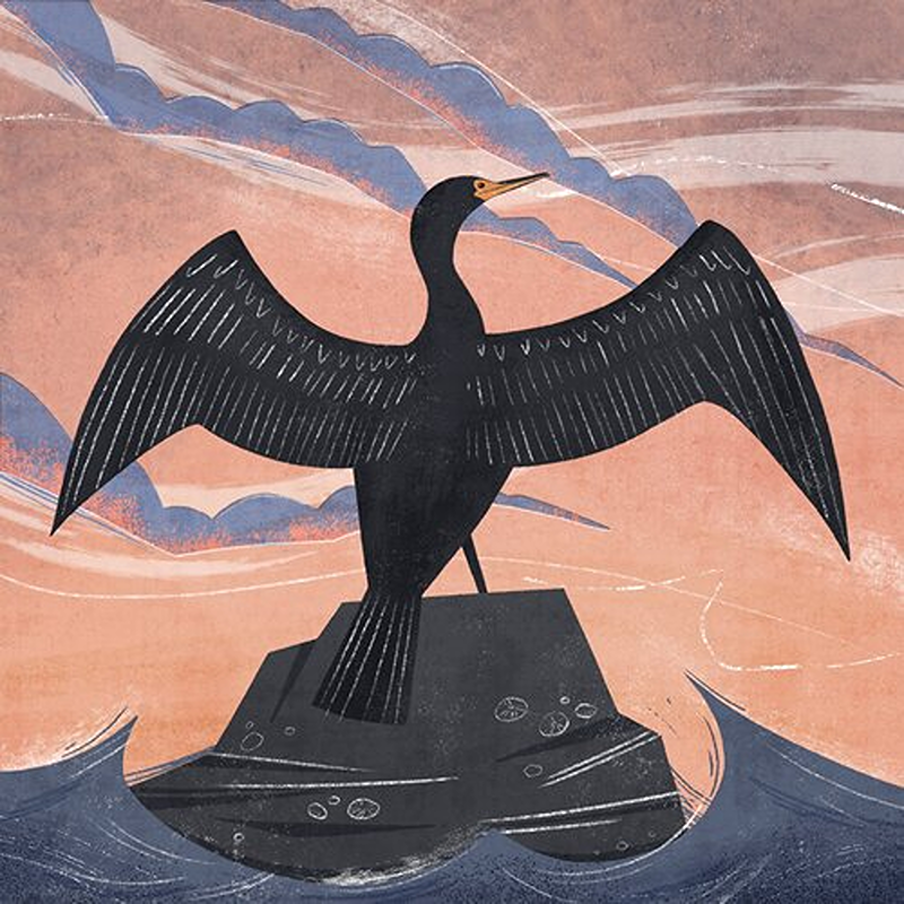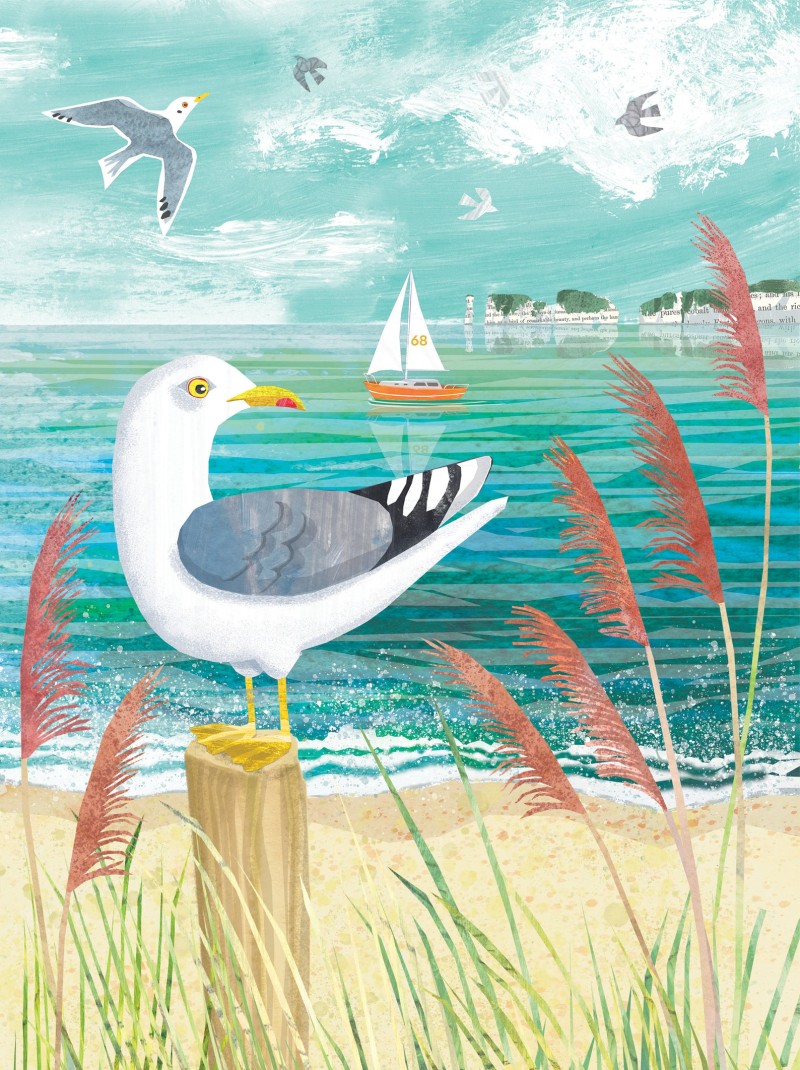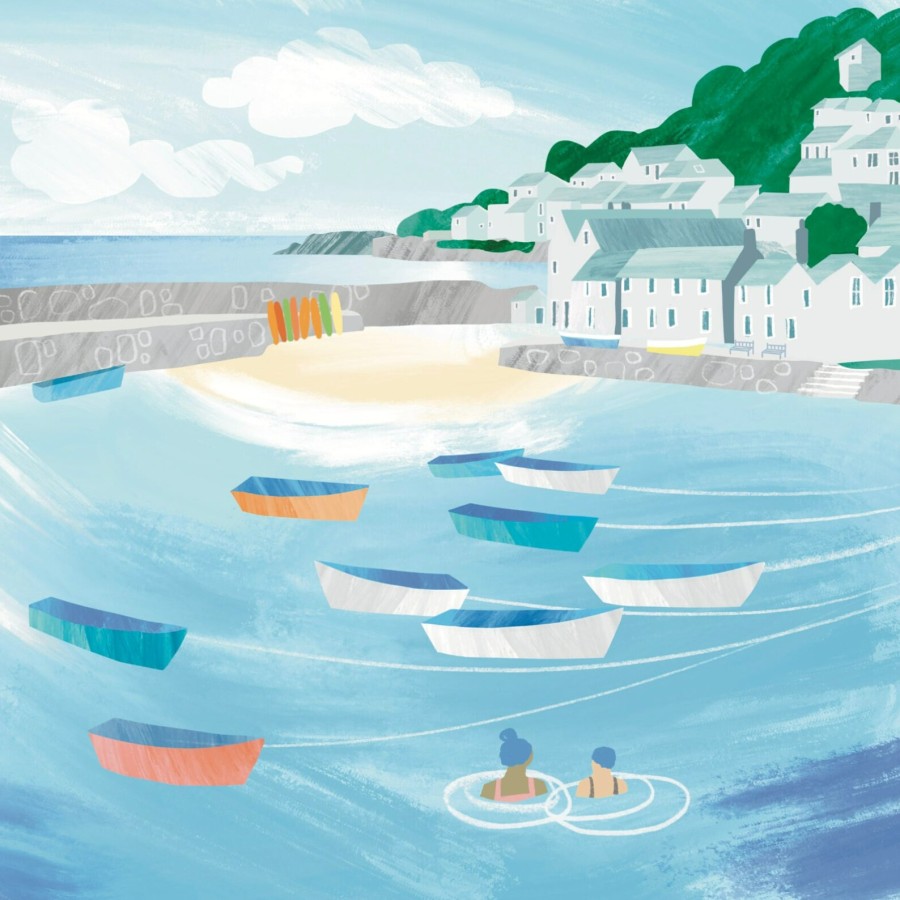Cormorant Coastal Birds (excellent at fishing)

Cormorants are spotted year-round, their feathers are not waterproof so can often be seen stretching out their wings to dry off, after using their excellent fishing skills to dive into the sea.
Keep at least 50 metres away from coastal birds (flying away wastes energy that could be spent feeding (they need extra space at high tide). Keep dogs away: disturbing nests can lead to abandoned chicks.
They use their long hook-tipped bills to swim underwater to eat, and tend to nest on low coastal cliffs or more recently, have started to fly inland to roost in trees (near lakes) and flooded gravel pits.
Large and black with white patches on their thighs during summer breeding, the younger birds are dark brown.
They look similar to (more numerous) shags, but the latter birds are smaller and are not seen away from coastal areas. They also have small ‘tufted crests’ dark green plumage and more narrow bills (with yellow gapes).
Preserving Habitats for Coastal Birds
England’s coastal birds claim a mix of habitats:
- Mudflats: Feast grounds for sandpipers and whimbrels at low tide.
- Rocky shores: Perfect for turnstones to hunt amongst crevices.
- Estuaries: Sheltered feeding spots where many birds gather in flocks.
- Sandy beaches: The ideal racetrack for sanderlings.
Migration is key for many coastal species. Some arrive in spring to breed, while others pass through on journeys between the Arctic and Africa. As tides and seasons shift, so do bird numbers.
Coastal birds face tough times. Their homes are shrinking due to building, pollution, and rising sea levels. Plastic waste and oil spills also threaten their food and safety.
But there is hope. Local wildlife trusts work to protect and restore vital habitats. They take part in volunteer beach cleans, and help communities care for coastal birds, with legal protection and careful town planning.
Top spots for coastal birdwatching:
Take care to avoid high tides and quicksands.
- Snettisham, Norfolk: Breath-taking flocks of waders over the Wash
- Spurn Point, Yorkshire: A migration hotspot, for all species.
- Farne Islands, Northumberland: Cormorants, terns, and puffins.
- Dungeness, Kent: A unique shingle headland rich with birdlife.
- Morecambe Bay, Lancashire: Vast sands attract huge waders.
It’s important not to disturb birds. RSPB Puffin Binoculars are designed for children (only cost around £30) and are small and lightweight, so pretty good for most adults too.






